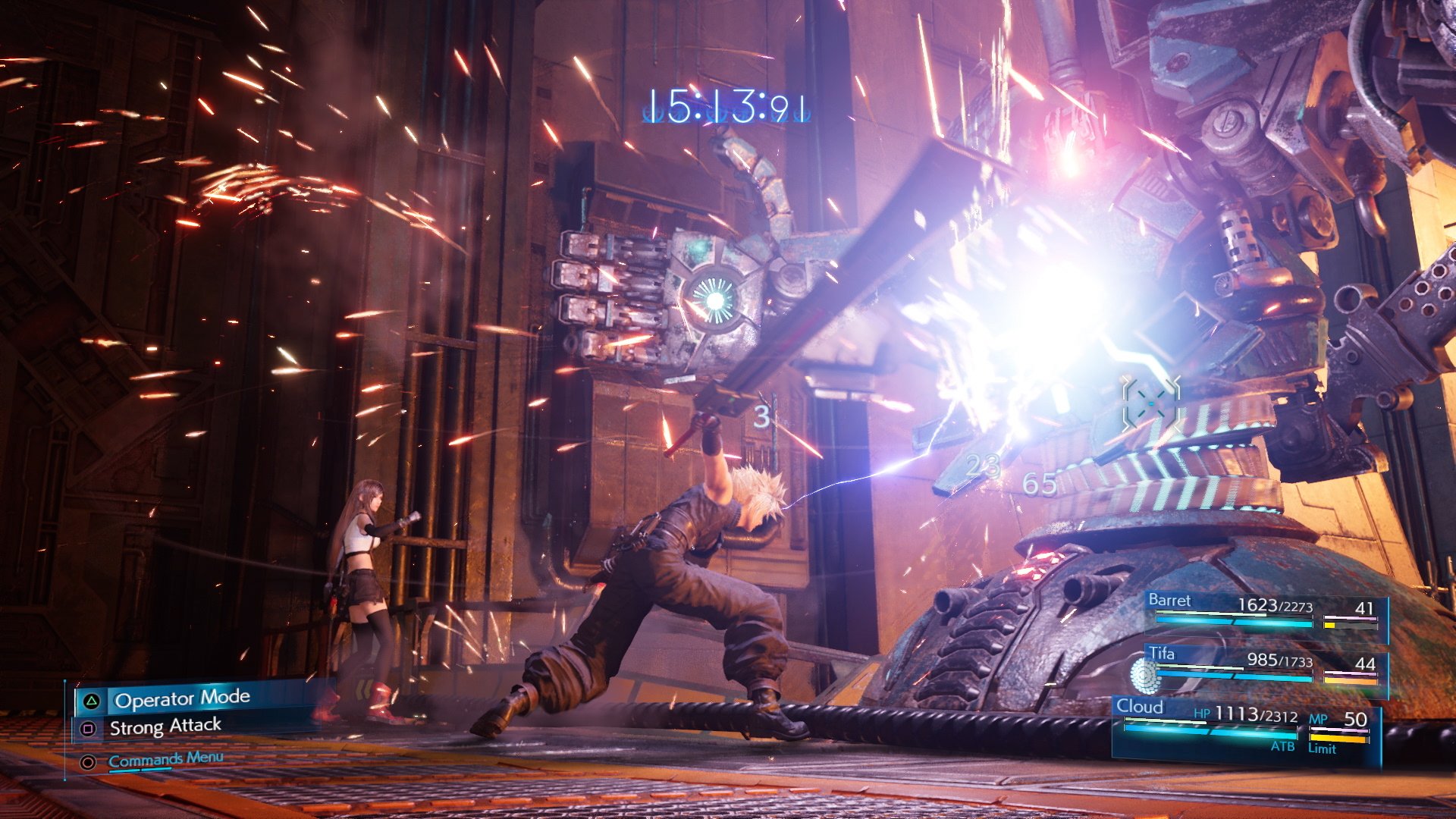- Final Fantasy Brave Exvius Game Overview - September 21, 2022
- Dirge of Cerberus Overview - May 21, 2022
- Yu Yevon Guide: A Closer Look at this Mysterious Character - May 21, 2022
Final Fantasy is one of the most amazing video game series of all time. It’s one of the longest-running and boasts some of the best-selling titles of all time within its impressive lexicon.
When it comes to the JRPG, while other games may have used the turn-based combat system prior to Final Fantasy, no game put it on the market as Final Fantasy did. When it was first released in 1987, gamers hadn’t experienced anything like it before. It was a full adventure game that took a long time to beat and several things in the game were completely new to the world of videogames, like magic use, special attacks, and most of all, the summons.
Although the first few games had pretty basic storylines and not a whole lot going on with the characters, as the 90s progressed, some of the Final Fantasy games created incredible stories with characters we look back fondly on to this day. Not only were the main characters great, but the villains to come from this series are so iconic that games are often still trying to clone both the looks and essences of these villains in today’s gaming world.
I’ve been a Final Fantasy fan for the majority of my life, and it all started when I first saw a friend playing Final Fantasy VII. It was so mature in its language, and the combat system was incredibly intriguing; most of all, the brilliant fusion of science fiction and Fantasy was unlike anything +I’d seen in games.
I had played Dragon Quest, I’d played Zelda, and also played my fair share of Sega side scrollers and fighting games, but nothing came close to creating the wonder and awe that Final Fantasy did. I went home and got Final Fantasy VIII as that was the newest one out at the time and was even more intrigued due to its unbelievable graphics at the time, and I knew shortly after that I had found my favorite game series.
While each title is usually independent of one another, there are many Final Fantasy gameplay features that are shared throughout the massive amount of games released in this series. Each game felt unique while being bound to either a system or familiar features that still made it be known that you were definitely playing a Final Fantasy game. Let’s explore what the world of Final Fantasy is all about.
The Combat
Throughout the history of the series, the combat has changed a lot while also retaining features that make it easy to know that you’re playing a Final Fantasy game. Let’s take a look at the battle systems that will be supporting you through hours and hours of gameplay.
Turn-Based Combat
The phrase that started the RPG is called Turn-Based and what it revolves around is you taking your turn in combat, selecting commands for your characters, and then waiting for your enemy to take theirs. Your commands generally are some combination of Attack, Magic, Items, or even Summons. These attacks would change between games, although magic would retain attack names throughout the series. It’s a system reminiscent of Chess or Checkers and allows for a ton of strategy.
Which sequence your characters attack in vs. your enemies is either completely random or, depending on the game, governed by Agility and Speed statistics that various characters have. Also, changing things up a bit during the combat was how many strikes a character could land, and that was also affected by agility as well.
It was first used in the original three Final Fantasy games and has since been copied by RPGs the world over.
Active Time Battle
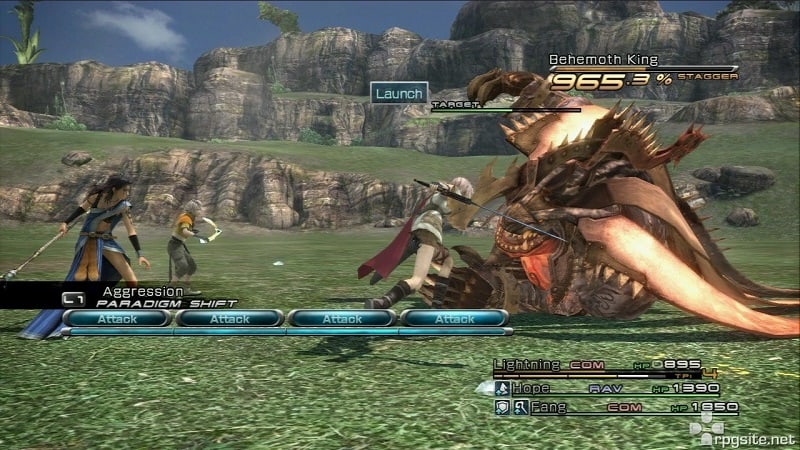
After there were some concerns about the gameplay being too slow with the Turn-Based system, Hiroyuki Ito created the Active Time Battle system, which made it the first battle system to ever receive an official name. It changed things up considerably by adding timing to all of the commands. The ATB gauge added to the game is what determined who was able to attack. This gave you an actual way to monitor when it was going to be your turn.
Depending on the action you choose, the ATB gauge would either move faster or slower. Spells and special abilities took longer to ready, while normal attacks happened much quicker.
Whenever you use an attack, item, or special ability, the gauge would reset, and the speed at which the reset happens would be tied to your character’s speed stats as well as the battle speed menu.
ATB created the idea of attack formations, too, so your party’s positioning now became an important thing to consider, and different combinations could create huge advantages over your enemies.
There were two options when it came to ATB, you had Wait mode and Active Mode. Wait mode resembled the Turn-Based system as time would essentially freeze when you were choosing your actions. Active mode, on the other hand, had everything happen as you chose your actions, so you could be attacked while choosing what to do next if you were too slow.
The first games to use the ATB system were Final Fantasy IV, Final Fantasy VI, and Final Fantasy IX.
Later, the Final Fantasy VII remake used the ATB gauge once again, though it strictly governed the use of skills, magic, and items while you could still use normal attacks in real-time no matter what the gauge read.
Several other games use variations of the ATB system, such as Chrono Trigger.
Charge Time Battle
This system was introduced in Final Fantasy Tactics and involved a meter that would fill up to 100, and each time it did, a new unit could take action. This would dictate the order of turns your characters had, and building your team around it was a crucial part of achieving victory.
Conditional Turn-Based Battle
A fusion of Turn-Based and ATB appeared in Final Fantasy X and combined the systems of old to form something new that showed you a list of characters and enemies on your screen and that would detail who’s turn to attack was up next. That meant that depending on your enemy, you and your party would not always have an equal amount of turns, so emphasizing your faster characters became a huge part of strategizing.
Because of this, abilities like Haste became huge boons when it came to winning in combat, and learning to balance your abilities with higher cooldown times versus quicker ones would often be the key to victory. Unlike ATB, this system stopped all time when a character’s turn began, so it felt more like the Turn-Based system. This got rid of the quick thinking from previous games and instead focused on strategy and planning your attacks out carefully between your party members.
Real-Time Battle
Real-Time Battle made its debut in Final Fantasy XI and was originally designed by Akihiko Matsui, who was known for creating the famous battle system in Chrono Trigger as well.
This system got rid of the random encounters of the past and instead showed enemies in real-time areas. This meant no battle screen would start, and everything would be seamless. This allowed for the players to see the monsters that were going to attack them or allow players to avoid combat completely.
Although it’s called Real-Time Battle, the characters would attack automatically without any input from the player, but special abilities like spells and summons needed to be input by the player.
This system is what many MMORPGs use today, and Final Fantasy XIV uses a system reminiscent of this as well. The feature that is consistent in this system is auto-attacking. This gets rid of the player having to constantly hit X to attack in battles and instead can focus on the special attacks that really matter most.
Active Dimension Battle
As the series grew older, so did the ATB system, and it eventually got replaced by the ADB system. This was a combination of ATB and Real-Time Battle that emphasized players being able to see what they’re about to fight.
This got rid of the iconic battle screens and instead let players move around freely during combat, enabling the ability to do back attacks and other position-based moves.
This system was introduced in Final Fantasy XII and created an MMORPG-like feel to the game despite it being a completely single player. This got rid of the battle music scenes as well, and everything felt more organic because of it.
It also introduced the ability to use turbo mode, which could speed you through generic encounters in the real world if you didn’t want to take time to fight a particular monster.
Exploration was emphasized heavily here, and areas in Final Fantasy XII often had incredibly strong enemies that you could not overtake until much later in the game, so they would have to be avoided until your party powered up considerably.
Command Synergy Battle
Taking things to the next level was Command Synergy Battle, which debuted in Final Fantasy XIII. This caused all characters to fight individually except for the player you’re controlling. Each character would have their own ATB gauge, and there would be constant action as long as the character’s meters were filled up. Each time your party uses an action, the gauge would lower, so determining how many attacks you could manage with your party members through the gauge was key in winning the tough battles of the game.
While most games allowed you to control all characters in your party, Command Synergy Battle emphasized just the party leader, and this made each character feel more prominent because of it.
Style Change Active Time Battle
A unique system was created for Lightning Returns: Final Fantasy XIII. Instead of the automated attacking, this system was completely controlled by the player, and combat for the first time in Final Fantasy was completely based on the reflexes and skill of the player. Attacks were manual for the first time in the series history. This system emphasized switching between attack styles which shifted based on the equipment Lightning was wearing.
Related: Final Fantasy Equipment Guide.
Each outfit or style had its own ATB gauge, and this determined how many special abilities you could pull off. You also had dodge abilities, quick steps, and attacks that did more damage when used from the side or behind an enemy, and the resulting combat system made the game feel like an action game more than any Final Fantasy before it.
Energy points governed what Lightning could do in battles, and using spells and special attacks would drain them, so resource management was crucial to victory in this game.
Active X Battle
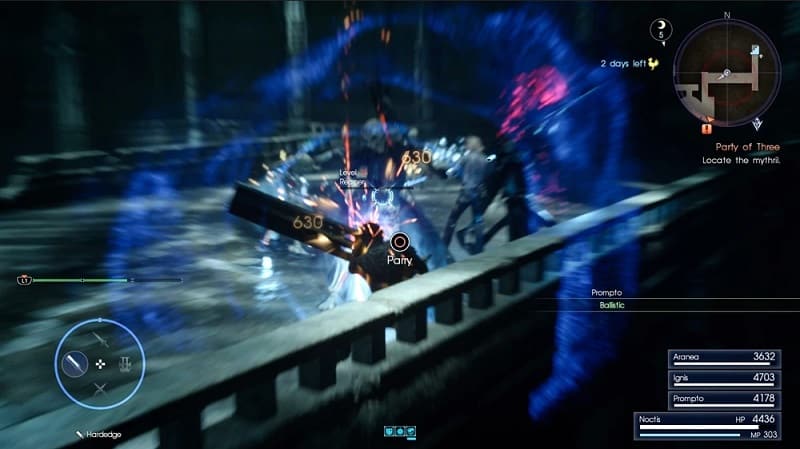
Following in the footsteps of Lightning Returns: Final Fantasy XIII, Final Fantasy XV again went completely real-time. Combat was action-based while also allowing you to choose from special abilities that filled up through a meter.
Enemies were visible on the world map, though sometimes they could warp into view out of nowhere, and this was reminiscent of the random battles of old.
The player-controlled one character at a time while the other party members fought freely controlled by AI. You could evade, defend, use special attacks, magic, and summons, and you’d even have the ability to use great timing to pull off impressive counter-attacks.
New to the series was the Danger state that a character could fall into. Instead of dying immediately, each character has a dangerous state that allows them to be healed before needing a Phoenix Down to revive them.
Each character was controllable and had a completely unique playstyle and special attacks to select from, and each character could use magic as well. The combat was incredibly fast and emphasized timing more than any other game before it.
Final Fantasy VII Remake System
Although it’s technically unnamed, Final Fantasy might’ve found its best combat system yet with their much-awaited title, Final Fantasy VII Remake. It combined the feature of the ATB system with the full real-time combat of Final Fantasy XV to create a mix that felt like what we always have dreamed Final Fantasy would one day feel like.
The system relied on multiple modes that the characters could switch from, and normal attacks would change depending on what you’d use. Normal attacks would also fill up the ATB bar, which allowed for special attacks to be used.
As a throwback to older systems, you could also use a Tactical Mode to stop time and choose attacks for you and your party as well. For a player who prefers faster combat, these commands could be bound to buttons, so Tactical Mode was never really needed.
The key to victory in this system was building up damage on an enemy so they would enter a staggering state, and it was here that you could cause some serious bonus damage.
All characters were controllable as well and could be switched between during combat with a button press.
Recurring Features
Final Fantasy has always had a few distinct things that made it feel different than any other series, and that was generally the attack commands. These special abilities would change their look but mostly maintain the same function throughout all of the games.
Summons
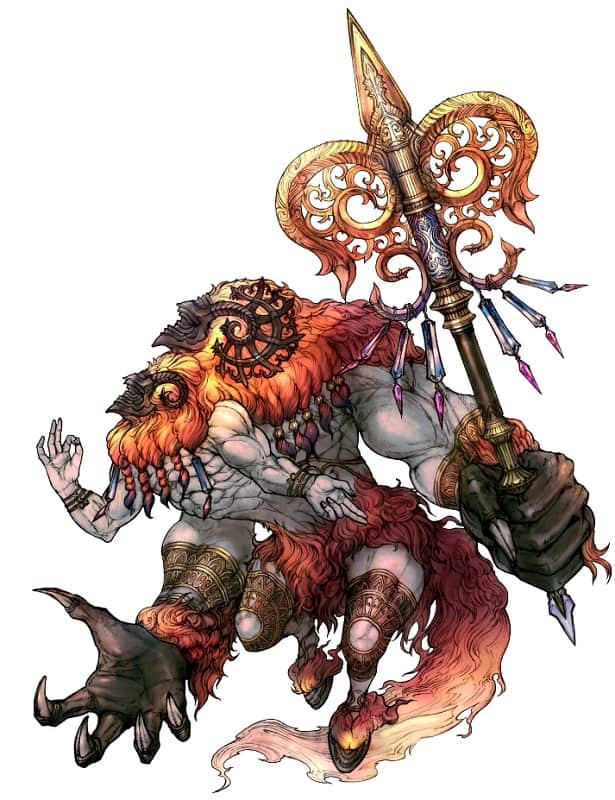
Summons are magical creatures that can be called upon in combat to unleash devastating attacks on your enemies or aid you with protective spells and buffs. They come in the forms of Espers, Eidolons, GFs, Aeons, and other names, but they usually serve the same purpose, and multiple Summons have been used consistently from game to game, such as Shiva and Ifrit.
Limit Breaks
When characters in Final Fantasy get low on health, that usually means it’s time to unleash the Limit Break. This is a special attack that does an enormous amount of damage and would be used as a last resort when a fight is going poorly.
This became the calling card of the series and still sees iterations of it used in the series’ current games. The Limit Break name has only been used a handful of times, but games have attacks with other names like Trances and Overdrives that essentially serve the same purpose.
Magic
A staple from the very beginning, Final Fantasy characters have always had some of the most unique magic attacks in gaming. Often broken up into multiple levels of power, the magic attacks in this series span the elements and cause a variety of damage types to opposing enemies.
Casting the right magic vs. certain enemies would often lead to victory, and setting up the party based on what kinds of magic they have to use has always been an important thing to consider, regardless of which Final Fantasy you’re playing.
Moogles
Moo4ou can’t think Final Fantasy without thinking of the loveable birds, the Chocobos. They feature in just about every game in some form or another, and whether you’re using them for mounted travel, racing with them, using them as fighting companions, and even facing them down in combat, the Chocobos are the most iconic Final Fantasy trope out there.
The Worlds
Final Fantasy’s main appeal has always been the world in which it has enraptured us. Throughout the history of the franchise, there have been many worlds that we’ve been able to explore. Some games even share the same game worlds, and that is a rarity as most games are completely independent of each other. Let’s check out the worlds on display here.
Final Fantasy I-III

The very first Final Fantasy game actually takes place in a completely unnamed world. Seeing as the story was pretty light in this game, the world didn’t get fleshed out much either. As far as what’s going on in the world, you’ve got four crystals that govern the elements, and they’re under attack.
There are also hints of futuristic elements in the redesigns of the game, which feels more in line with the later Final Fantasy games. The next two games in the franchise would follow with similar worlds, although Final Fantasy 3 started to build out the rest of its world much more.
Related
Final Fantasy IV
Final Fantasy IV takes place on Earth. It also goes by the name of the Blue Planet as well. While it’s named after Earth, it doesn’t share any geographical similarities to our planet. It is a world separated by an Underworld and an Overworld. The way these two lands are broken up is quite interesting.
The Overworld has oceans and tons of land that resemble the actual Earth, while the Underworld is inside the Earth and is filled with lava and rocks. Again, Crystals are a focal point of the world, and there are 4 in the Overworld and 4 in the Underworld. In addition to these, there are also Eidolons that exist in Feymarch, which is a magical land where these incredible creatures exist.
Final Fantasy V
The series went back to the unnamed thing with Final Fantasy V, but the world became more fleshed out than ever before. There are multiple worlds that exist within the planet you play on, and it’s accessible through a mysterious portal called the Interdimensional Rift.
These worlds are fully sustained by the Crystals once again. There also exists a mysterious plane called the Void, where the Crystals are said to come from.
Final Fantasy VI
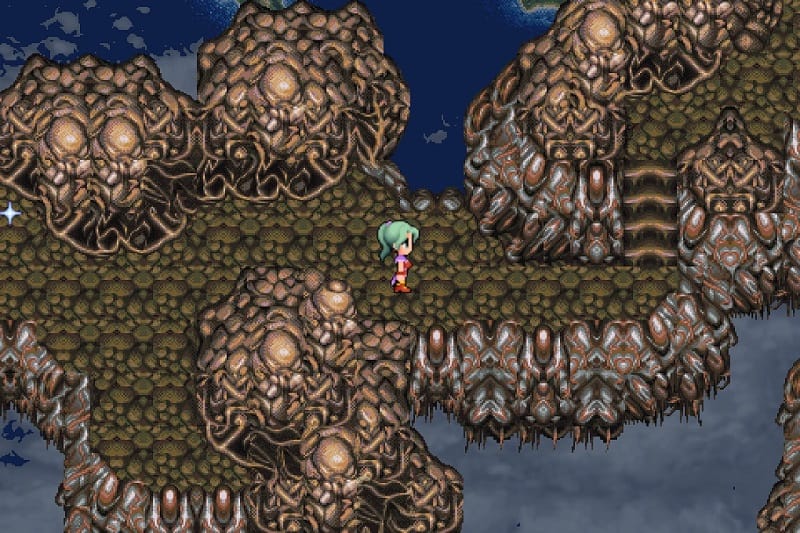
Final Fantasy VI takes place on another unnamed planet that actually takes on two separate forms. The first is that of the World of Balance, but later in the game, it becomes the World of Ruin. The World of Balance has two main continents you’ll travel two as well as a few islands too.
The World of Ruin, though, is a complete hellscape. Everything is destroyed, water has been polluted, and the last bastion of civilization is within a couple of individual items. There is also a purely magic world, where the Espers of the game come from.
Final Fantasy VII
While there were hints of technology taking over throughout the worlds of previous Final Fantasy games, Final Fantasy VII completely embraced it. Gone are the classic kingdoms and knights of previous games, and instead, massive cities, modern architecture, and other modern and futuristic features now populate the world.
That world is known as Gaia. Gaia is very similar to Earth in certain landmasses and areas but differs from it in one major way, the Lifestream. The Lifestream is what gives the world that ability to create life and is essentially the blood of the planet. It allows all other living creatures to exist, and without it, the planet faces certain doom. Within the planet are the Weapons massive, destructive monstrosities which appear when the planet is in danger.
The most populated area on the planet is the city of Midgar. This is a modern-looking city that is slowly polluting the planet and destroying the Lifestream by siphoning its energy through Mako Reactors. This was the biggest world in the Final Fantasy series at this point, and the various different locations and interactivity you could have with the world was a legendary mark for the franchise.
For the first time in the series, modern-day technology like Cellphones and Helicopters were on display, and it helped to introduce a larger audience into a franchise that had long had a primary fantasy vibe to it.
Final Fantasy VIII
Squaresoft recognized how well the futuristic vibe hit Final Fantasy VII and decided to stick to the same script with Final Fantasy VIII, which merged a normal-looking world with some wild, futuristic cities and innovations, including space travel.
Much like Final Fantasy VII, Final Fantasy VIII again utilized modern inventions, and the majority of travel involved trains and cars. There is also a Nasa type aerial force, television, and other innovations that had yet to make their way into the series before.
In addition to modern tech, the world has a moon that is populated by sole monsters, and during the game, an event called the Lunar Cry causes those monsters to come to the planet and ravage the civilizations that inhabit it.
The world had a ton of interesting architecture that had elements of the real world combined with Fantasy, and the result was a mesmerizing and varied world that was a joy to explore.
Final Fantasy IX
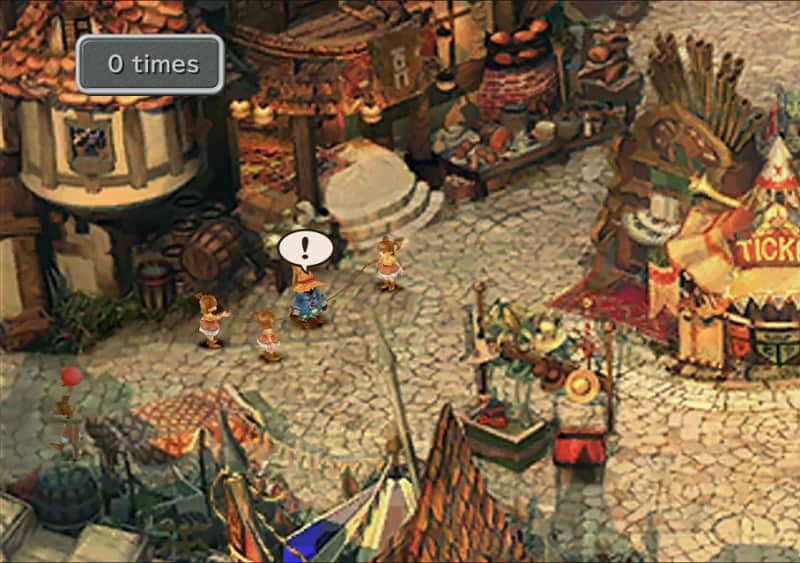
Despite the roaring successes of Final Fantasy VII and Final Fantasy VIII, Final Fantasy IX went back in time to a world of fantasy mixed with some parts of sci-fi but ultimately created a wildly interesting world that felt, unlike any other Final Fantasy.
The world again is called Gaia, and it’s made up of the Mist Continent, The Outer Continent, The Lost Continent, and the Forgotten Continent. Gaia also has two moons, with one being blue and the other being red.
There is also the world of Terra to explore in Final Fantasy IX as well. The theme of Crystals came back in this one, though it was intelligently linked into a complex and fascinating storyline that showed off the maturity and writing talents that Squaresoft had put on display with the past few titles.
Not only was the world unique and amazing to explore, but it also alluded to previous Final Fantasy games as well, which is the first time the series had referenced Final Fantasies of the past.
Final Fantasy X and Final Fantasy X-2
Although every Final Fantasy manages to introduce an amazing world to explore, none seemed to ever match the creativity and imagination on display with the world of Spira. Although you start off in what appears to be a futuristic city with wild-looking sports arenas, soon after, you’re whisked away to a world where technology is clearly far behind that city, and instead, the vibe is tribal and island-like.
The mix of worlds here is fantastic, and for the first time in the series, the atmosphere is similar to that of the South Pacific Islands of the world. Of course, Final Fantasy is known for its varied environments, and the world of Spira is no different as you’ll find snowy mountains, desert wastelands, and beautiful forests to explore as well.
The world is periodically invaded by a terrifying monster called Sin, who appears to reset civilization after a period of time and stops all technology from progressing. The energy of the world lies within entities called Pyreflies, which exist in all living beings in the world and are completely invisible to everyone except when they are concentrated in small areas.
In addition, there is also the Farplane, which is basically the Afterlife and a gathering for the dead. This realm is full of Pyreflies
Final Fantasy XI
Final Fantasy XI went online for the first time, and with it came a brand new world called Vana’diel. The background of this world involves a sacred jewel that banished the darkness in the past. Then, light-filled the world and created the gods who now slumber.
The world is broken up into massive regions that are inhabited by the Enlightened Races and the Beastmen Horde. There is warring conflict all over the place, and the story takes you to various locations which expand over time. Because of the MMO nature of the game, it didn’t allow for much growth within the world.
Final Fantasy XII
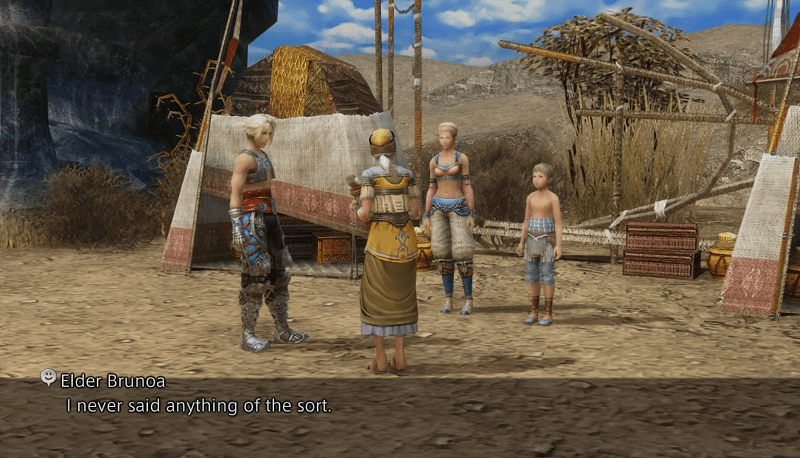
Final Fantasy XII explored the land of Ivalice, a unique mix of fantasy, science fiction, and steampunk that created an incredibly unique vibe. There are Crystals here that allow the usage of magic throughout the world, and there is also magical summons called Espers here too. This is all allowed through Mist, which is a mysterious fog that allows people of Ivalice to use magic as well as summons,
The world here is made up of normal lands such as forests, plains, and deserts, but there are also floating landmasses as well that are formed through magic, and only airships can approach these.
The vibe of the world is that of Mediterranean and Indian themes. It uses a mix of those cultures’ architecture along with several features of science fiction to create a unique mix and another awesome world to explore.
Final Fantasy XIII
The world that you will explore over the course of Final Fantasy XIII is that of Cocoon. Final Fantasy goes full Science Fiction here for the first time, and the result is a fascinating world that looks completely unlike any of the worlds of the games prior.
Mankind largely lives in a world of Cocoon, but below lies the world of Gran Pulse. Gran Pulse is a much more primitive world that is filled with massive animals and plants. The inhabitants are in constant conflict with each other.
The worlds are created by machines called Fal’cie, who are essentially machine gods that are powered by Crystals. Throughout the games, you will encounter Fal’cie as well as people and enemies from each area.
In addition to these worlds, there is also a dimension called Valhalla which exists outside of reality. You will encounter this world in the XIII sequels.
Lightning Returns: Final Fantasy XIII
Although it’s a sequel to Final Fantasy XIII, Lightning Returns: Final Fantasy XIII takes place in Nova Chrysalia. This is a world that has slowly fused the worlds of Gran Pulse as well as Valhalla.
This game takes place near the end of the world, so much of the game is just clinging to the last remnants of civilization as the apocalypse looms. You will explore the expiring world and the multiple continents in your journey to stop the impending doom.
Final Fantasy XIV
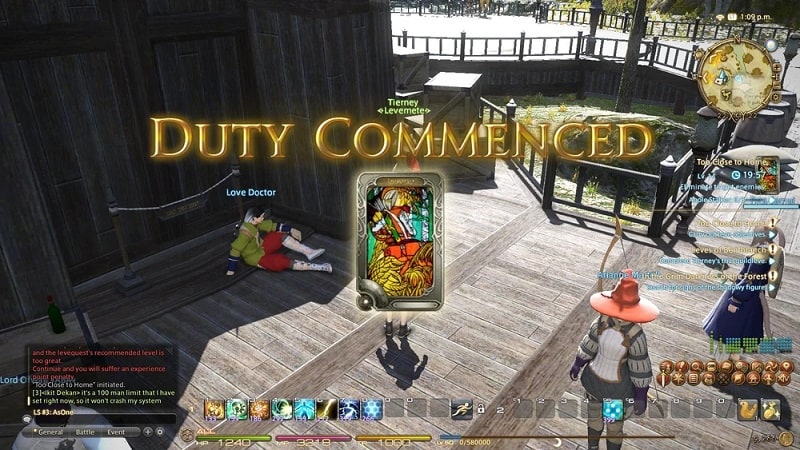
Going online once more, Final Fantasy XIV introduced the world of Hydaelyn. It’s a massive world that has three main regions. Eorzea resides in the west, Islabard in the center of the world, and The Far East in the eastern portion. There are also tons of small islands and a few larger ones as well.
Governing so much of the world is an energy called Aether. This acts as a source of both magic as well as powering all the living beings of the world. The Aetherial flow has been disrupted in the planet’s past, causing all types of cataclysmic events.
Final Fantasy XV
With Final Fantasy XV officially making its debut on next-gen consoles, an exciting new world had to follow. Eos was the world that supported the story of Noctis and his companions, and it was a world that was more realistic than any the series had seen. Although there were kingdoms and the usual Final Fantasy madness, there were also cars, airships, gas stations, modern-looking towns, and cities, and also post-apocalyptic ruin to explore.
The result is something that mixes all of the previous Final Fantasy worlds together to create something that feels like many different games, depending on what point in the story you’re at. The jarring sight of seeing massive monsters roam just beyond a normal-looking town is fascinating, and it’s all supported with the best graphics the franchise has ever seen.
The world is allowed to exist by the Titan, a massive god that is frozen in time, stopping a meteor from destroying the world. Throughout the game, the world of Eos changes throughout the game when the plague called the Star Scourge unleashes an age of darkness on the world,*
Through time travel, you’ll also explore the world in the aftermath of an apocalyptic event.
FAQs
Question: How hard are the Final Fantasy games?
Answer: They vary from title to title, but mostly, Final Fantasy games are as hard as you make them. If you fail to level up properly and equip your party the right way, you will find these games to be very difficult. If you’re good at that, though, only the hidden super bosses in each game will give you any trouble.
Question: Which Final Fantasy should I start with?
Answer: If you’re brand new to the series, Final Fantasy VII or Final Fantasy VIII will be your best introductions to the series as their more modern graphics and dialogue will give you an easy entry into seeing what this franchise is all about.
Question: Which is the best Final Fantasy?
Answer: This is all a matter of Preference, but Final Fantasy VII, Final Fantasy XII, and Final Fantasy X are generally up there as far as favorites go. My personal favorite is Final Fantasy VIII.
Conclusion
I hope you enjoyed this little tour through the wild world of Final Fantasy, and with over 15 games in its lexicon and countless spinoffs, this is a series that can last you for years and remains one of the most singular and unique gaming franchises of all time.


